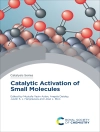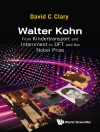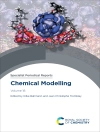This annual review provides critical analysis of the literature on photochemistry and its applications for anyone wanting to keep up to date with the field. Combining reviews on the latest advances in photochemical research with specific topical highlights, this book is the primary resource for anyone wanting succinct and rich information.
The volume starts with periodical reports of the recent literature on physical and inorganic aspects, including the molecules of colour, light induced reactions in cryogenic matrices, photobiological systems studied by time-resolved infrared spectroscopy, photophysics and photochemistry of transition metal complexes, recent advances in photocatalytic water splitting, and finally a chapter on time-resolved spectroscopy application of LFP to heterogeneous photocatalysis. Coverage continues in the second part with highlighted topics including, among others, transition metal complexes-based photochemotherapy, advances in polaritonic photochemistry, synthetic strategies based on halogen atom transfer processes and photochemical water oxidation using metal-based chromospheres. This volume will again include a third section entitled SPR Lectures on Photochemistry, providing examples introducing academic readers to a photochemistry topic and precious help for students in photochemistry.
Table of Content
Introduction of the year 2022;Of corpses, light and electricity;The molecules of colour. New structural derivatives from indigo: trypthantrin and indirubin;Light induced reactions in cryogenic matrices (highlights 2021–2022);Photobiological systems studied by time-resolved infrared spectroscopy (2021–2022);Time resolved spectroscopy applied to heterogeneous photocatalytic materials (2019–2022);Photophysics of transition metal complexes (2021-2022);Recent advances in photocatalytic water splitting and hydrogen generation (2021–2022);Photooxidation of thioethers: preparative and mechanistic investigations (2018–2022);Photochemical routes to artemisinin;Advances in polaritonic photochemistry;New synthetic strategies based on photoinduced halogen-atom transfer (XAT);Metal-based chromophores for photochemical water oxidation;Visible-light mediated strategies for the synthesis of nitrogen-based heterocycles;Non-established photoswitchable organic systems;Photocatalytic enantioselective radical transformation enabled by radical–polar crossover;Recent photoswitchable peptides with biological function;The butterfly effect of photochromes;Illuminating the future: a review of ruthenium-based agents for dual action photochemotherapy and photodynamic therapy;Guiding excited state reactivity – the journey from the Paternò–Büchi reaction to transposed and aza Paternò–Büchi reactions
About the author
Stefano Protti obtained the Master’s degree in 2003 (110/110 cum laude). In 2007, he completed his Ph D in Pavia focusing on photochemical arylations via phenyl cations. Later he moved to LASIR Laboratory (Lille, France), where he investigated the photoreactivity and the photophysics of flavonoids. He came back to Pavia and started working in the field of (photo)green synthetic chemistry. After a postdoctoral stay at the i Bit Tec-S laboratory (CEA Saclay, France) carrying out studies on photocatalyzed oxidation reactions for energy storage, he moved again to Pavia. Since 2018 is Associate Professor at the University of Pavia, Italy. He is currently editor of the Specialist Periodical Reports in Photochemistry of the Royal Society of Chemistry, member of the Early Career Board of the ACS Sustainable Chemistry and Engineering and of the International Advisory Board of the European Journal of Organic Chemistry. The research activity of Stefano Protti has been mainly focused on the development of new synthetic methods for the light driven formation of C-C and C-heteroatom bonds under metal free conditions.












